Not Turkey Again
by Amber Hoskins, Adult Services Librarian

Whether you celebrate the holidays or not, spending a day off with loved ones and/or friends always gives us an excuse partake in food and conversation. If you’re like me, you might be bored with the usual turkey meal that ends up on the table this time of year. In lieu of all the turkey throughout the decades, my family has decided to do something different for meals during this season.
While trying to decide what we would have, I did some research on what meals would be good for a gathering of people. With that thought in mind, why not have several different dishes from around the world, or challenge yourself to make it all from your local area? From Beijing-style Hot Pot to a biryani recipe provided by a Kenyan grandmother, the limits are endless. Depending on your guests’ preferences, there is something out there that everyone can enjoy, with the help of your library.
The first book I came across while thinking about regional foods was “Local Dirt” by Andrea Bemis. This cookbook is a reminder that one of the best ways to connect with our community is to eat food resourced from the people that live in it. Many of the recipes in this book contain ingredients that are grown locally right here in the Manhattan area. Visiting the local farmers’ market and buying meat from our local cattle ranchers to feed our loved ones helps us give back to the community we reside in. Our region is also lucky enough to have local wine and beer to add to the festivities, if you imbibe. This book contains recipes that incorporate meat, as well as vegetarian dishes.
When I noticed a cookbook that mentioned recipes from grandmothers, I knew I had to look further into it, as the majority of grandmas I have come across have been amazing cooks. This book is called “In Bibi’s Kitchen: The Recipes and Stories of Grandmothers from Eight African Countries that Touch the Indian Ocean” by Hawa Hassan. The first recipe that caught my eye was Ma Kauthar’s recipe for chicken biryani. Biryani is one of my favorite dishes, but I was intrigued by this one because it is different than the usual one I make. In Kenya, tomatoes and potatoes are incorporated in this recipe, and it appears that it would be pretty amazing. This book also includes several recipes that do not include meat or are meat optional. Many of the drinks and other foods listed in this book look tasty and would be great for a gathering.
While looking for ideas on this subject, I came across a dish that is meant to be shared, Hot Pot. Shirley Chung, a Top Chef alum, has a cookbook called “Chinese Heritage: Cooking from My American Kitchen.” This book has a lot of crowd-pleasing recipes, from potstickers to ribs. In this collection, Chung gives her instructions for Beijing-style Hot Pot. This particular recipe will be a hit for anyone who enjoys meat and veggies. It also works well for those in your group who are not a fan of spicy food. Unlike Sichuan Hot Pot, Beijing-style does not include spicy heat and can be enjoyed by all ages.
Finally, I would like to highlight our cookbooks that focus on Indigenous cooking. My father’s family is Cherokee, and I am excited to try some of the recipes that involve foods that our ancestors would have made. Navajo chef Freddie Bitsoie recently released “New Native Kitchen: Celebrating Modern Recipes of the American Indian.” This book includes soups, desserts, and everything in between. Another cookbook we have is by Oglala Lakota Sean Sherman, called “The Sioux Chef’s Indigenous Kitchen.” I like the variety that both of these cookbooks have, while also focusing on being a “locavore.” Even if we stick to only our area for food resources, we can still make most (possibly all) of the dishes included.
After browsing through the cookbook selection here at MPL, I know that I am not short on options, but I must admit that it is putting my indecisiveness to the test. I am grateful that I have people to help with these choices, otherwise we may never get this meal done. I trust that I have given you an excuse to jump off the turkey wagon if you have been considering it. Whatever your preference may be, I hope that you get a chance to enjoy time with friends or family during these winter months.



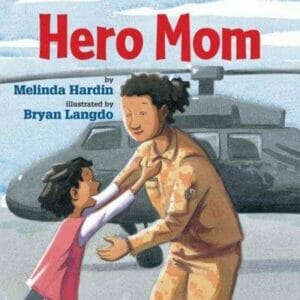
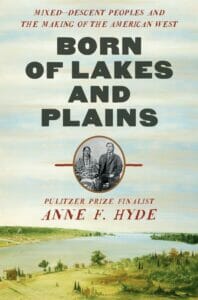 Indigenous Kansas was the theme of this year’s October 10th Indigenous People’s Day, hosted at K-State by the members of the Indigenous Faculty Staff Alliance (IFSA). IFSA is composed of both Indigenous and non-Indigenous faculty and staff from across the university. They work through all levels of the university and community to support diversity and inclusion across the board. I have proudly been a member since my arrival in Kansas in 2016. With their encouragement, I quickly found a home, gained many new Aunties, and became curious about the Indigenous history at K-State, which led me on a multi-year journey and research project. This focus on Kansas Indigeneity respired my curiosity about how Indigenous students were or weren’t documented in K-State history.
Indigenous Kansas was the theme of this year’s October 10th Indigenous People’s Day, hosted at K-State by the members of the Indigenous Faculty Staff Alliance (IFSA). IFSA is composed of both Indigenous and non-Indigenous faculty and staff from across the university. They work through all levels of the university and community to support diversity and inclusion across the board. I have proudly been a member since my arrival in Kansas in 2016. With their encouragement, I quickly found a home, gained many new Aunties, and became curious about the Indigenous history at K-State, which led me on a multi-year journey and research project. This focus on Kansas Indigeneity respired my curiosity about how Indigenous students were or weren’t documented in K-State history.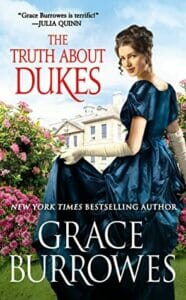 Since “Bridgerton” first took Netflix by storm in 2020, there’s been a renewed surge of interest in Regency romances. On screens, there’s been “Bridgerton” season two, a similarly-cast adaptation of “Mr. Malcolm’s List,” a second season of “Sanditon,” and a remake of Jane Austen’s “Persuasion.” In print, there’s the usual steady stream of Regency-set romance novels, but a growing swath of these focus on narratives that have thus far been decidedly outside of the mainstream.
Since “Bridgerton” first took Netflix by storm in 2020, there’s been a renewed surge of interest in Regency romances. On screens, there’s been “Bridgerton” season two, a similarly-cast adaptation of “Mr. Malcolm’s List,” a second season of “Sanditon,” and a remake of Jane Austen’s “Persuasion.” In print, there’s the usual steady stream of Regency-set romance novels, but a growing swath of these focus on narratives that have thus far been decidedly outside of the mainstream.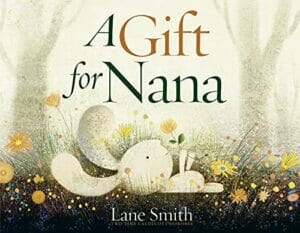 Today is Sweetest Day, a little-known holiday reportedly started by the candy industry more than 100 years ago, and celebrated similarly to Valentine’s Day in some spots of the Midwest. But Sweetest Day has the added impact of encouraging other sweet actions as well, such as helping your neighbors, doing acts of kindness, and giving gifts to friends and people in need. These themes show up in many children’s books, I think because children have a big heart for people who need some uplifting, and children are excellent purveyors of love and kindness with the ability to melt the hearts of others. Here are some sweet books to share with children to celebrate the holiday.
Today is Sweetest Day, a little-known holiday reportedly started by the candy industry more than 100 years ago, and celebrated similarly to Valentine’s Day in some spots of the Midwest. But Sweetest Day has the added impact of encouraging other sweet actions as well, such as helping your neighbors, doing acts of kindness, and giving gifts to friends and people in need. These themes show up in many children’s books, I think because children have a big heart for people who need some uplifting, and children are excellent purveyors of love and kindness with the ability to melt the hearts of others. Here are some sweet books to share with children to celebrate the holiday. I recently went on a vacation where I had copious amounts of time to read. That doesn’t happen very often anymore. Despite one of the greatest misconceptions about working in a library, I don’t sit around at work reading books, and when I get home there are other distractions that readily pull me away from reading, like watching a tiny human or doing adult things like washing dishes. But when the opportunity presents itself to sit in the shade on a nice day reading books for hours, I do my best to embrace it.
I recently went on a vacation where I had copious amounts of time to read. That doesn’t happen very often anymore. Despite one of the greatest misconceptions about working in a library, I don’t sit around at work reading books, and when I get home there are other distractions that readily pull me away from reading, like watching a tiny human or doing adult things like washing dishes. But when the opportunity presents itself to sit in the shade on a nice day reading books for hours, I do my best to embrace it.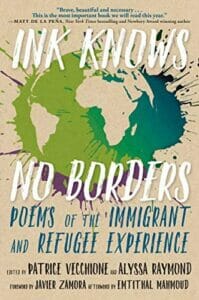 The
The 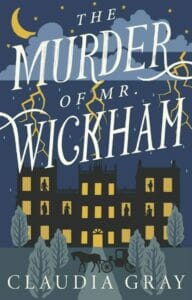 In my opinion, there is no better way to spend a fall afternoon than curled up in a comfy chair, with a cup of tea and a good mystery novel. Here are some of the new mysteries available at Manhattan Public Library.
In my opinion, there is no better way to spend a fall afternoon than curled up in a comfy chair, with a cup of tea and a good mystery novel. Here are some of the new mysteries available at Manhattan Public Library.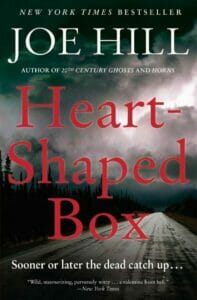 With fall rapidly approaching and Halloween around the corner, now is a good time to discuss my preferred genre, horror. Since there are so many books to choose from, I would like to share some of my favorite authors who have mastered this category, and have more than one good book to offer.
With fall rapidly approaching and Halloween around the corner, now is a good time to discuss my preferred genre, horror. Since there are so many books to choose from, I would like to share some of my favorite authors who have mastered this category, and have more than one good book to offer.